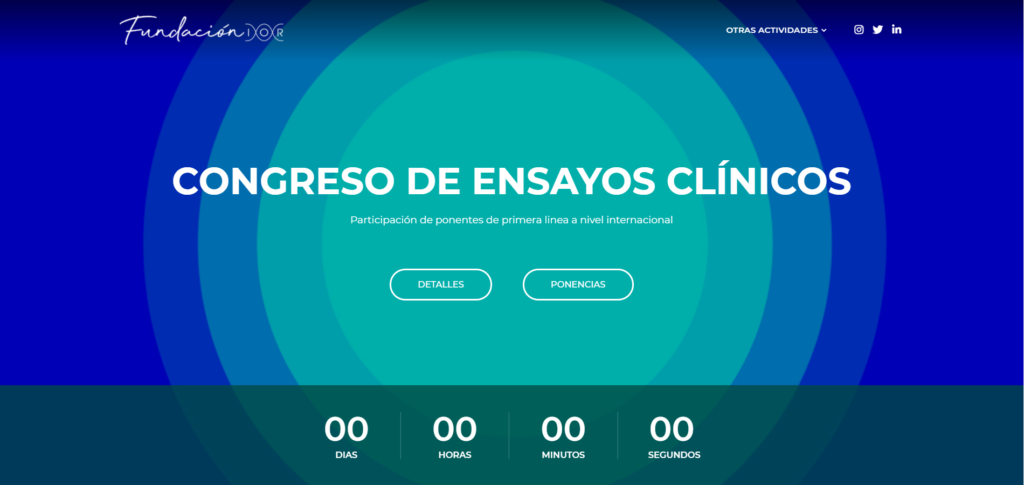Context
In order to open another revenue source and enhance the brand’s visibility, it was decided to start managing events / conferences (within the oncology sector) in such a way that it would give a modern and professional image.
Broadly speaking, a website was necessary to advertise the different events and for potential attendees to register, receive the ticket and the invoice online. In order to reduce the cost of starting up each of the events and taking advantage of SEO positioning, it was agreed that all events would be advertised from the same portal, although the feeling that the user would have when entering the portal except that the web was built “ad hoc” for the active event (there could only be one event / congress running at the same time).
Given that it was a “satellite” project that was not part of the usual sources of income and in order not to mix costs with other investing companies, the administration established that the project would be totally independent at a technical and economic level. This also meant that the human resources assigned to the project were very limited and therefore the technological platform was essential to make the month automated and easy to handle possible.
After evaluating different suppliers, it was decided to take on the project internally since none of them gave us the quality / price ratio we were looking for.
Goals
The objectives to be achieved were the following:
- Enhance the visibility of the brand on the Internet.
- Give a modern image.
- Publicize the events that were being programmed.
Requirements
The requirements of the web platform were as follows:
- Allow easy management of different events.
- Buy tickets online.
- Easy management of the tickets sold.
- Different types of tickets and management of offers and discounts.
- Being able to send mass emails announcing new events
- Own domain and new email addresses.
- Maximum implementation time: 30 days.
Implementation
Due to time and price, I decided to implement the platform on WordPress with the following components:
- Multi-event template.
- Ecommerce plugin.
- Payment platform.
- Mailing platform with template.
For the general “look and feel” a supplier was hired who gave me the guidelines for colors, typography, logo, etc.
For security and convenience, the infrastructure was contracted to Google Cloud.
My contribution
Initially, I was in charge of writing the RFP that we sent to the different providers we contacted. As I said before, as none of the offers convinced us, I finally took charge of designing and implementing the entire technological platform.
Conclusions
Thanks to using pre-built platforms (CMS), the implementation was reduced to “fitting” the different plugins, customizing the template and providing it with content. We arrived in time for the website to serve to publicize the first event and to handle the management of the tickets. The platform worked very well, but despite having a good template, it required a lot of dedication to fill it with content.
On a personal level, it helped me to have the first contact with the Google Cloud and explore its simplest possibilities. In addition, the Google Cloud Bitnami image repository was used, so all the security and optimization part was already pre-configured.

